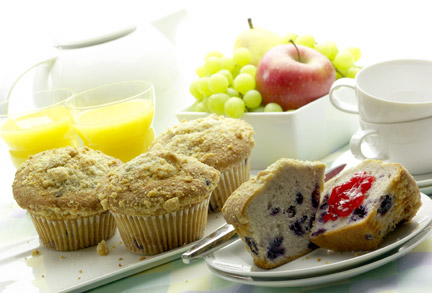|
Have you ever wondered what it is exactly that makes food photography look natural or unnatural? Sure, location food photography tends to look more natural than studio food photography, but what is it about studio food photography that makes it look so fake, and more importantly what can we do as a food photographers, to make our studio food shots look more natural. When a food photographer takes out his camera and takes a picture of an existing environment, things tend to look very natural, but when that same photographer tries to create a natural looking photo in the studio, he very often falls short of the mark. I’m not saying that the “environmental” photos always look good, but they usually look “natural”. There are many reasons for this shortcoming of studio food photography, and this article will attempt to explore why many studio food photographs tend to appear unnatural. |
||
|
|
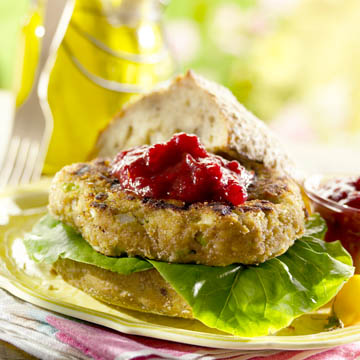 |
|
| For the sake of organization, I’ve broken the issue of “how to make your studio food photography look natural” into two categories. One category I call “inside the crop”, which refers to all the elements that can be seen directly in the boundaries of the photograph. The other category I call “outside the crop”, which refers to all the elements that aren’t inside the boundaries of the photo, but still affect the look and feel of the food photography. There are things both inside the crop and outside the crop that contribute to the natural feel of a food photo, but often times we overlook the elements outside the crop.
I consider this article to be a bit advanced for most photographers just beginning their career as a professional, but I think if you can understand issues like this, you can shorten your food photography learning curve immensely. Usually, beginning food photographers are more concerned about things like f-stops and getting the food in focus. Some photographers never get past that part of food photography, while others realize that all that technical “stuff” is nothing but a set of tools that enable the food photographer to create photos that “fulfill their visions”. When I say things like “fulfill their visions”, don’t get me wrong. I’m not talking about some high-falutten, mystical, ideological translation of some obscure concept. I’m talking about simple decisions we all make as food photographers, to create better photos that fulfill our individual needs. One example might be, “how much depth of field would work best for what I’m trying to do”? Or another might be, “What should be in focus and what should be out-of-focus to help sell this product”? Or… “What can I do to make this food photograph feel more like it’s morning”? A food photographer builds a photo in order to communicate something to the viewer. The technical tools such as lighting, focus, cameral angle etc., are the language they use to tell their story. Inside the crop of a food photographCasual is natural, in food photographyWhen you, as food photographer, set up an environmental studio food shot, you will need several elements in the photo in order to make the image look “natural”. If you look at your own diner table or restaurant table during your next meal, you will probably notice things that you hadn’t thought would be there. There might be a menu rack or table tent display, or an extra plate off to the side that no one is using, or a candleholder or some other object not normally around. I’m not suggesting that you need to put weird things in all your shots, just be aware that thinking “outside the box” when propping, can sometimes make your shot look a little more natural. In my opinion, too many food photos look sterile. People often times make a mess when they eat. Some of their food actually leaves crumbs behind and sometimes not all the crumbs stay on the plate. |
||
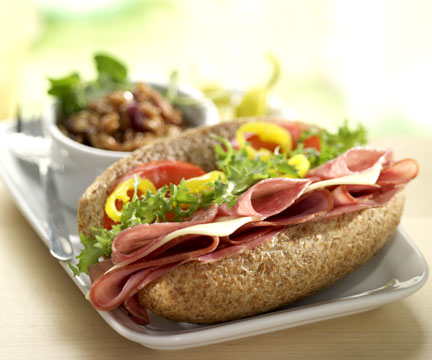
Many things contribute to making a food photograph look natural. But looking natural is only one goal of a photo and usually not the highest goal. We usually photograph food in order to sell more product. I'm saying that making the photo look natural is good, but may not always be the most important thing. |
|
|
|
On some occasions, people don’t put their silverware back where they found it. Heck, sometimes the kids set the table and the fork is on the wrong side of the plate and sometimes the water glass is not where Martha Stewart suggested it should be placed. Sometimes, people actually eat their food. At least some of it might be gone before the picture is taken. In real life, that may actually happen. Sure, it might not work for a national ad, but maybe it would be perfect for an editorial food photography illustration. To sum it up, things don’t always need to look so perfect. A casual feel to a food photograph tends to add realism the picture and therefore make it look more natural to the viewer. Backgrounds in food photographyThe background that you shoot on, is very important in making a food photo look natural. People usually expect to see food in certain environments and when they see food in unusual settings, they may subconsciously feel that the shot is unnatural in some way. Shooting on a grey seamless is not a very natural environment, so if you’re going for a “natural look”, try to place the food in a setting that might fit the food. |
||
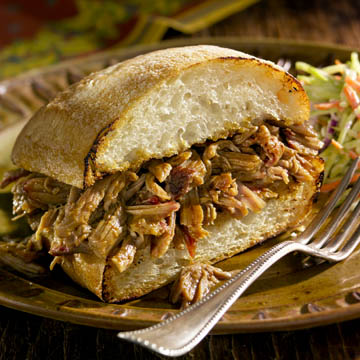 Messy is natural... At least in my house, it is... |
A table surface or kitchen counter is usually an expected and natural food photography background. A person holding a plate in front of an apron is a believable setting. There are many other natural settings and figuring out is a natural, but still somewhat unique setting, is always challenging for a food photographer. It gets to be really repetitious to use the same backgrounds and environments all the time. We’re always trying to find a new spin or angle for our food photos. Sometimes we try to shoot on the edge of a table or somehow elevate the plate a little so that we can get a slightly different perspective on the typical table elements. Our need to get imaginative with angles and perspectives can sometimes play havoc with our desire to make the setting look natural, but often it’s worth the risk just for the sake of variety. And of course, having the shot look entirely natural, isn’t always the main goal of the photo. There ate many times when other goals supercede the need for a natural looking photo. P.O.V (point of view) in food photographyPerspective and angle are something to consider in the discussion of “natural looking food photography”. People usually expect to see their food from a specific Point of view. |
|
|
Some people argue that food should always be shot from the viewpoint of the “eater”. I totally disagree with this statement. It may look a little more “natural”, but in my opinion, the 45% down angle of the viewer, usually doesn’t show off the food very well. I much prefer to get down low, sort of from the POV of a six year-old standing beside the dining room table. This low angle tends to make the food appear to be “higher” and more substantial. I’d like to take a minute and discuss the fact that in my opinion, the word “normal” does not necessarily equal “natural”. Sometimes “normal” is boring and something a little “unusual” is preferable, and can still be “natural”. Sometimes “unusual” is eye catching, and goal of being eye catching is more important than the goal of looking normal or even looking natural. Looking “eye catching” a perfectly acceptable goal is certain circumstances. Keep that in mind. That’s where that “vision” thing comes in handy again… Food photography LightingLighting, of course is a big factor in making food photography look natural. When I talk about lighting, I like to divide the discussion into four different categories: quantity, color, direction, and quality. Quantity of light in food photographyIn this day and age, with cameras having better and better high-ISO capabilities, quantity of light really isn’t much of an issue to us food photographers, unless that is, we try to shoot without a tripod. Then, quantity of light might matter top us. I, for one, always use a tripod when shooting food, at least for the “gotta have” shot. When I’m using a 35mm camera, once I have THE shot I know I must have, I’ll sometimes take the camera off the tripod and try to get a shot or two from different angles. Most times though, these types of shots tend to be ruined from camera shake (more like photographer shake) and from missed focus. I much prefer a tripod when shooting food. Now shooting people is another story, and another article… :+) Having the food placed out of focus or blurry from camera shake, does not make the food photo look more or less natural, it just makes it look amateurish. There are other reason why the initial camera angle usually works out best. The stylist usually styles the shot with a specific angle in mind. She tries to optimize the food to look its best shot from one angle at the expense of other angles. There are times when changing the angle even uncovers things like small plastic wedges, wooden blocks, or small sticks that support one or more elements in the photo. Of course, every once in a while, I’ll get lucky and one of these freelance shots is better than the original angle, but this is the exception and not the rule. Usually, it’s just a waste of time. The only other area where you might want to discuss the quantity of light when shooting food is in relation to light ratio, or the difference between the “main” light and the “fill” light. In other words “how dark are the shadows”? To me, the light ratio of a food photograph really doesn’t affect if it looks “natural” or not. It does affect if it looks “good” or not, but usually, that’s a separate issue. You might think from my last statement that I think most food photos should be within a certain light ratio parameter. As a general rule of thumb, that’s true, but having said that, rules are meant to be broken and some of the most beautiful food photos I’ve seen, have broken that rule. |
||
|
Light ratio is a tool of the photographic artist and has little to do with whether a shot looks natural or not. Dramatically lit photos can look natural or unnatural and be beautiful or ugly. The two issues are not related. Different situations require different light ratios to look natural. For example, breakfasts tend to be “high key” and diner shots tend to “want” to be lit more “low key” to appear natural. There are some foods that are “fun foods” and just have no business being lit with a high light ratio that make it look “dark and moody”. Take a hotdog for example, you just shouldn’t light a hotdog, dark and moody. It just doesn’t fit with our subconscious understanding of what a hotdog should look like. There are foods that require a certain type of light to look “natural”, a hotdog being just one of them… Can you think of some others? |
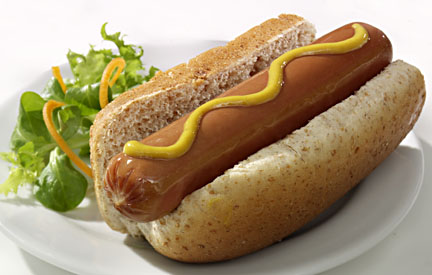
|
|
Color of light in food photographyMost photographers tend to take the color of light for granted, and to tell you the truth, I’m one of them. There used to be a time when I made all kinds of effort to get the white balance of my food photography totally neutral. Now-a-days, I tend to lean toward the opinion that food photographer is usually better if it’s “warmer”. Of course, there are exceptions to this, but for the most part, if a food photo goes a little “warm”, it’s better off. Why is this…? I guess that I’d have to say that we all accept this because most of us eat many of our meals at the kitchen or dining room table where the predominate light source is tungsten, and warm in color. At least that’s true for me. In the summer, at my house, when the days are longer and we’re eating our diner while it’s still light out, many times the sun comes streaming in our large kitchen window and it makes some REALLY beautiful food photography lighting. There have been many days when I just sit there in wonder, trying to figure out how I could duplicate God’s lighting. Because it tends to be late in the day when we have diner, the sun is low in the sky and the color temperature is warmer than usual. |
||
|
I guess that we all have a pre-conceived idea of what “natural” is, and for me, the natural light color on my food tends to be warm.
The only exception for “warm” being the natural color of food photography, at least for me, is breakfast. I think breakfast needs to look either neutral or even a touch “cool” in color. I’m not really sure why either… You would think that in the morning, when the light is low in the sky (just like diner) that the light would be warm in color, but for some reason, “I” don’t perceive that to be true, even though it probably is. Maybe it’s just the fact that my kitchen faces west and for over twenty years now, no warm sun has streamed onto my bacon and eggs. I just get a blast of blue (white / overcast – I live in Pittsburgh) sky filtering in my large kitchen window. I’d be curious to what you had to say about this… I’m wondering if it’s just me or not… That actually brings up an interesting point. |
|
|
My idea of “natural” may be different than yours…We’re talking here about what looks natural… For each of us, what looks natural is going to be something slightly different. What looks natural to me might not be the same as what looks natural to you or maybe to your client. Keep this in mind when you’re working on a job and the client disagrees with what your concepts are. He / she just might have a different point of view then you do. He may have grown up in a house that had an easterly facing kitchen while yours may have faced west, and because of that, he may think that breakfast lighting needs to be “warm” and you think it should be “cool”. That could make all the difference. Neither is right or wrong, but it might make a difference to your client or your target audience. Just something to keep in mind… Direction of light in food photographyIn the reality of each of our eating environments, light can and does come from pretty much any direction. So, because “what’s natural” is different for each of us, the direction of light probably has very little to do with whether it makes a shot look natural or not. The direction of that light does, however, make a huge difference on whether the food looks good or not. Light direction is probably the biggest factor of whether a food photo is successful or not. Whether the light source is a window or a photographic strobe head, the exact placement of the main light source can either accentuate or hide the shape and texture of the food being photographed. The exact placement of the main light source is probably the most important decision the food photographer will make, but it actually has little to do with whether the shot looks natural or not… Quality of light in food photographyWhen I speak of the quality of light, I’m talking about the softness of the shadow created by that light when it illuminates an object. While the sun usually casts a similar quality shadow from day to day, we usually don’t eat under the sun’s direct light. We usually eat our meals indoors where there may be very different each meal or in different eating environments. For example, in my house, we eat most of our meals in a little room open to and connected with the kitchen. This room is very light because of the large glass double door that open up on to our deck. We have a lamp that hangs directly above the table for additional light. So, depending on the time of day, my food is illuminated by either window light or tungsten light. To me, either of these light sources is considered “natural”. There are times when the light in my dining area is soft and from the side and then there are times when the lighting is harsh and from above. Either of these situations is natural to me, but may not be to you. I even consider cross-shadows to be natural looking. In my food photography, however, I try to stay away from this effect whenever possible. There’s natural, and then there’s what I consider “good photography” :+). Sometimes the light on my food is a mixture of these light sources making one side of my food slightly different in color than the other side. While this is completely natural, I find it to be a little weird in food photography. You’ll need to make that call for yourself. Lighting can help the shot to look natural or unnatural, but in my opinion, because of all our different backgrounds and past experiences, lighting is not the major factor in what makes a food photo look natural or not. |
||
Stuff outside the crop in food photography and other things that make food photography look naturalThis brings me to the point that I really wanted to write about in the first place. Most of the stuff above this paragraph is pretty much obvious. I’ve come to a realization recently that I wanted to share with you. I’ve stumbled upon one of the tings that I think REALLY makes a difference in making a food photo look natural. Ready….. I’ve come to the realization that it’s what’s outside the crop, but still affects the photo, that really makes a difference in the whether food photography looks natural or not. If you, as a food photographer, can add some of these visible, but not so obvious influences, it will subconsciously make the viewer accept the image as being more natural. |
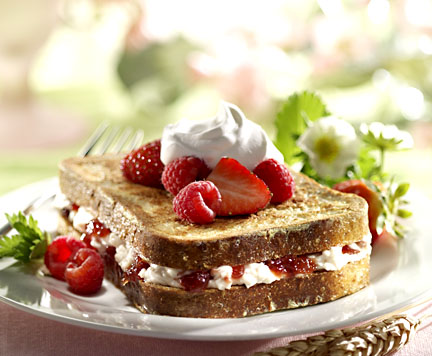
|
|
|
When talking about this subject of looking natural, I’ve come to the conclusion that we’re talking about affecting the viewer’s subconscious. A person’s subconscious has the ability to see more, in less time, than the person’s conscious can see. When someone looks at a photo, they usually do so rather quickly, moving on to the next picture after a second or two. In that short time period, I think that the subconscious picks up on many more things that the conscious mind ignores, things like reflections. Peple depend on their subconscious to determine what looks natural, they don’t really think about it, it just happens. Don’t you agree? So, our job is to affect the subconscious, even if most viewer’s conscious mind totally misses our errorts.
|
||
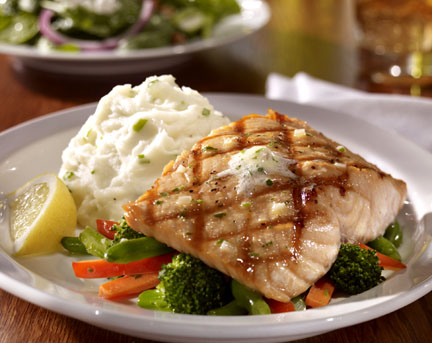
See the colored reflections in the table surface? I've come to realize that it's little details like this that make food photography appear natural. It gives a clue to the subconscious that there is more going on in this environment than just a table sitting in the middle of a black photo studio. |
Most studio food photos look as though they were shot in a studio, and therein lies the problem. Food photography studios are usually darkened rooms with just a couple of lights turned on and positioned in specific places to light the food. The result is a photo that looks like it was lit by only one or two lights and shot on a table in the middle of a dark room. So what’s missing? I’ll tell you what’s missing. What’s missing is all the stuff just outside the crop that ends up influencing the image, if it were shot in a “natural” environment. Reflections One of the things that make food photography look natural is when there are miscellaneous reflections in the prop elements on the set. In reality, the environment around the crop or your photo is lit just as brightly as your food and the result is a bunch of reflections in your image. When I’m doing a food photo, I intentionally try to add reflections in the plates and silverware. Many of these reflections end up being unidentifiable, but even if you can’t tell what the reflections are, they tend to add some type of life to the picture that wouldn’t be there any other way. Sometimes I add objects and sometimes I add lights as reflections. |
|
|
Sometimes I even add colored lights. Colored reflections can sometimes add a little life to a bland photo. Sure, like all things in life and photography, you can get carried away, but give this technique a try and I’m sure you’ll find it to be a valuable tool. Partial items Another thing that makes food photography look natural to me is when multiple objects in the photo are cropped out, except for just a wee little bit. Sometimes, the object doesn’t even have to be identifiable. It’s just “something” that was there on the table and it wasn’t important enough to be in the crop, but it was something… I know it may sound kind of weird, but I think it works on the subconscious level. Too many food photographs are just too staged. You got your plate, fork and glass, and that’s it! Too many food photos have every object in it, identifiable and cleanly isolated in the crop of the photo. It just looks so damn fake. Loosen up a little! Life is messier that that. |
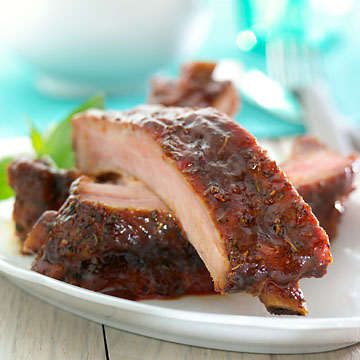
|
|
|
Shadows There is one other thing that I like to do that adds to the natural feeling of the photography. I like to cast shadows into the frame, from outside the frame. The idea is that the stuff you see inside the crop is only part of what’s going on in the total / real enviornment. I’m attempting to persuade the subconscious that there is more to this than what it sees. By placing objects just outside the crop and letting the shadow of that object land inside the crop of the photo, I think that the viewer gets the idea that this is not a photo studio, but a real and natural environment. It’s sometimes a very subtle effect, but I really think it works to fool the subconscious into thinking it’s somewhere real. So there you have it… These are some of the things that I think make my shots look natural and less staged. You may not have to agree with what I said, but maybe you can give some of these food photography techniques a try and see if they improve your work and make your food photography look a little more natural. |
||
|
Care to join our mailing list? Return to the Food Photography Blog Didn't find what you were looking for? .© Michael Ray 2009 |
||


